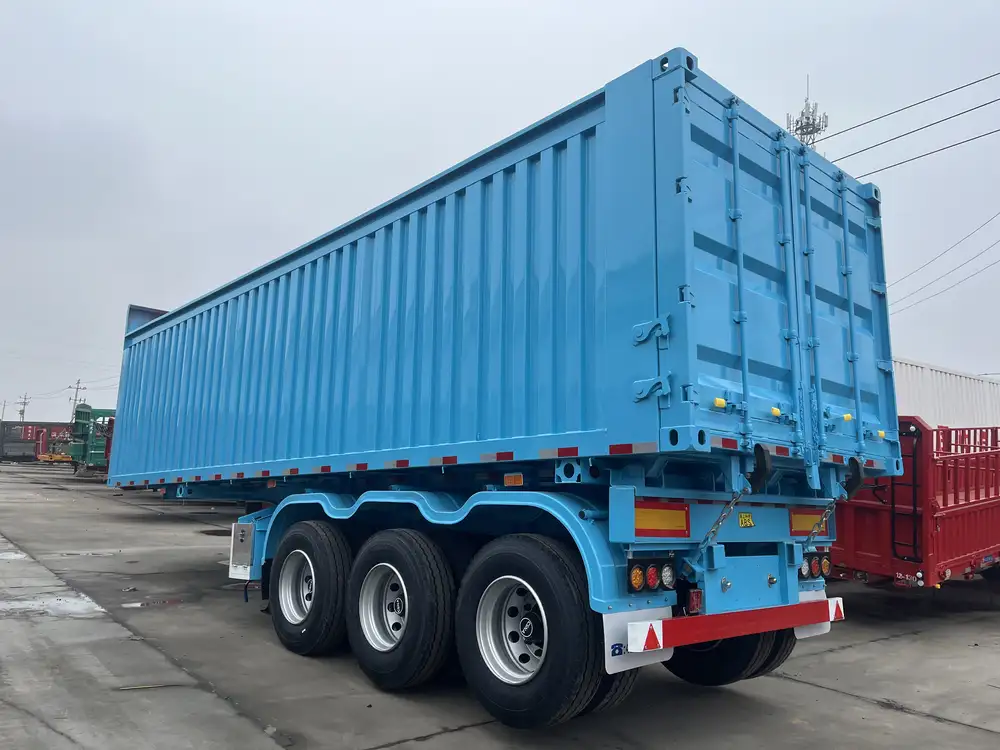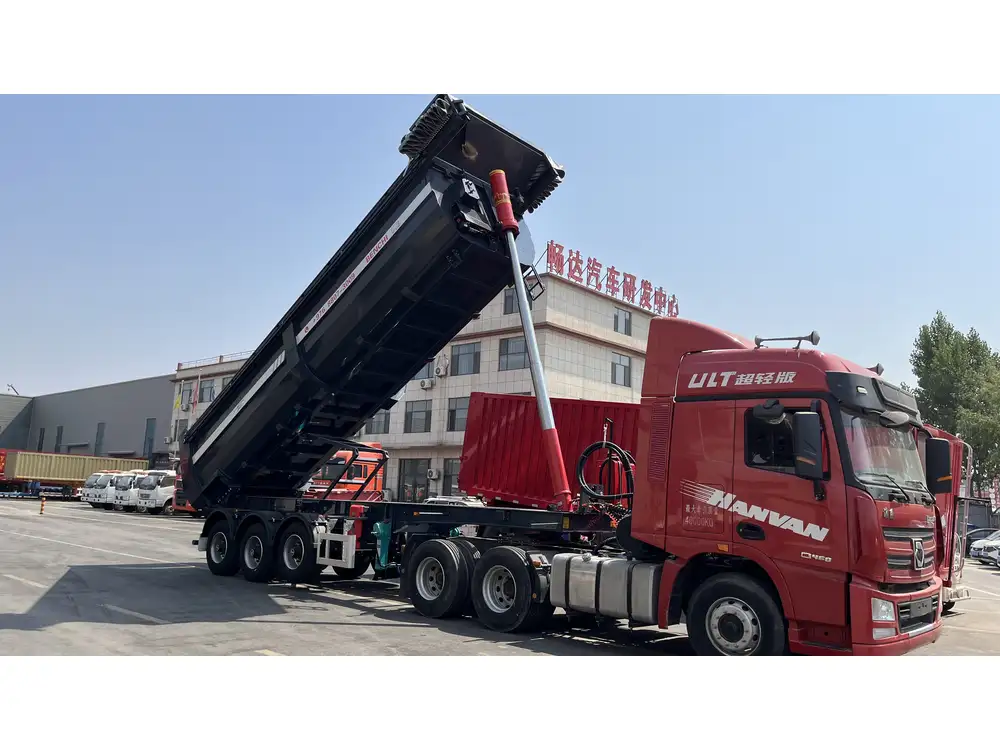When it comes to maintaining the efficiency and longevity of a dump trailer, one common issue that operators face is the adherence of dirt and debris to the trailer bed. Whether for construction, landscaping, or agricultural purposes, dirt buildup can reduce the effectiveness of your dump trailer, making unloading a cumbersome task. Here, we outline comprehensive strategies aimed at keeping your dump trailer clean and efficient, providing you with insights and actionable solutions to tackle this ongoing challenge.
Understanding the Problem: Why Does Dirt Stick to Dump Trailers?
Before delving into prevention methods, it’s important to comprehend why dirt tends to cling to dump trailer surfaces. Various factors contribute to this phenomenon:
- Surface Material: Different materials have varying textures. For instance, steel is more prone to dirt accumulation than smoother surfaces like aluminum.
- Moisture Content: Wet soil adheres more readily to surfaces, creating a muddy situation which complicates unloading.
- Load Weight and Type: Heavier loads or granular materials can shift during transport, leading to increased friction and dirt locking onto the surface.
By identifying these contributing factors, we can develop strategic measures to mitigate dirt adhesion effectively.
1. Choose the Right Material for Your Dump Trailer

Material Comparison Chart
| Material | Benefits | Drawbacks |
|---|---|---|
| Steel | Durable, heavy-duty | Can corrode, more dirt adhesion |
| Aluminum | Lightweight, rust-resistant | Can be less sturdy, prone to dents |
| Composite | Non-stick surface, immune to rust | Potentially more expensive |
Selecting a dump trailer crafted from materials known for their non-stick properties can significantly reduce dirt buildup. Aluminum, while lighter, may not always be as durable, whereas composite materials often prioritize anti-stick technology.
2. Surface Treatments: Coatings and Sealants
Applying specialized coatings can dramatically improve the non-stick properties of your dump trailer. Here are some options to consider:
Types of Coatings
- PTFE (Teflon): Known for its excellent non-stick qualities, Teflon can be applied to trailer beds for optimal dirt release.
- Polyurethane Sealants: These can provide a durable, waterproof layer that prevents moisture from seeping into the surface, reducing mud adhesion.
- Rubberized Liners: Designed for heavy-duty applications, these liners protect against scratches and create a slick surface that mud and dirt can’t easily adhere to.

Application Benefits
- Reduces cleaning time significantly.
- Enhances longevity of the trailer by protecting the surface.
- Facilitates easier sliding off of materials.
3. Optimal Load Management Techniques
The way loads are placed and balanced within your dump trailer plays a significant role in how dirt clings to the surface. Here’s how to manage loads effectively:
Best Practices for Load Management
- Use Tarps: When transporting wet materials, covering loads with tarps can help minimize water exposure, thus reducing mud buildup.
- Load Distribution: Ensure an even distribution of weight across the trailer. An uneven load can cause shifting, leading to dirt sticking as materials bounce against the walls and floor.
- Avoid Overloading: Excessive weights can lead to packed materials that create a paste-like consistency, making it harder to release after dumping.

Quick Load Checklist
- [ ] Weight evenly distributed
- [ ] Load covered with a tarp if necessary
- [ ] Do not exceed the trailer’s weight limits
4. Cleaning Techniques for Easy Maintenance
Regardless of your prevention efforts, dirt may still accumulate. Implementing effective cleaning strategies ensures longevity and maintains performance.
Routine Cleaning Steps
- Use a High-Pressure Washer: An effective tool for removing stuck-on dirt and debris. Make sure to angle the nozzle appropriately to avoid damaging the trailer’s surface.
- Solvent-Based Cleaners: Specific cleaning agents can help break down stubborn dirt and grime. Ensure that solvents are compatible with your trailer’s material.
- Scraping and Brushing: For adhering materials that resist washing, use stiff brushes or scrapers as a last resort, but be cautious not to scratch or damage the surface during this process.

Maintenance Schedule
| Frequency | Action | Tools Needed |
|---|---|---|
| After Every Use | Quick wash down with water | High-pressure washer |
| Weekly | Deep clean using appropriate cleaners | Brushes, scrapers, solvents |
| Monthly | Inspect for damage and dirt buildup | Visual inspection checklist |
5. Storage and Environmental Considerations
When not in use, how you store your dump trailer can also affect its cleanliness. Implementing proper storage solutions helps mitigate dirt accumulation.
Effective Storage Solutions
- Indoor Storage: Whenever possible, storing the trailer indoors protects against the elements and reduces the chances of dirt sticking.
- Covers and Tarps: If indoor storage isn’t feasible, investing in high-quality covers can shield the trailer from rain and mud exposure.
- Regular Inspections: Periodically inspect the trailer for any wear and tear that could lead to easier adherence of materials. Addressing these issues promptly can save cleanup time and effort later.

6. Utilizing Technology and Innovations
Embracing modern technology can streamline preventing dirt from sticking to your dump trailer. Explore innovative options that can further enhance your operational efficiency.
Innovative Products and Technologies
- Self-Cleaning Coatings: Some newer technologies feature self-cleaning properties, allowing dirt and debris to wash away with rain or water exposure effectively.
- Automated Cleaning Systems: For industries with heavy-duty needs, integrated automated washing systems can be installed to maintain cleanliness regularly without manual effort.
Considerations for Investment
- Cost vs. Benefit: Analyze potential costs against the frequency of use and the extent of dirt issues.
- Industry Recommendations: Consult with manufacturers or industry peers for the best innovations tailored to your specific needs and waste types.

Conclusion: Embracing a Clean Future for Your Dump Trailer
Keeping dirt from sticking to your dump trailer is not merely a matter of cleanliness; it’s about maintaining the efficiency, functionality, and lifespan of your equipment. From selecting the appropriate materials to employing cutting-edge technologies, various strategies can be employed to tackle dirt adhesion effectively. By integrating these practices into your routine and addressing potential issues proactively, you can enjoy smoother operations, reduced maintenance times, and enhanced productivity in your hauling endeavors.
Establishing a comprehensive strategy encompasses understanding the problem, utilizing effective solutions, and implementing maintenance practices that ensure your dump trailer remains in optimal condition. By adopting the measures discussed above, you’ll safeguard your investment and ensure that your dump trailer continues to perform at peak efficiency for years to come.



